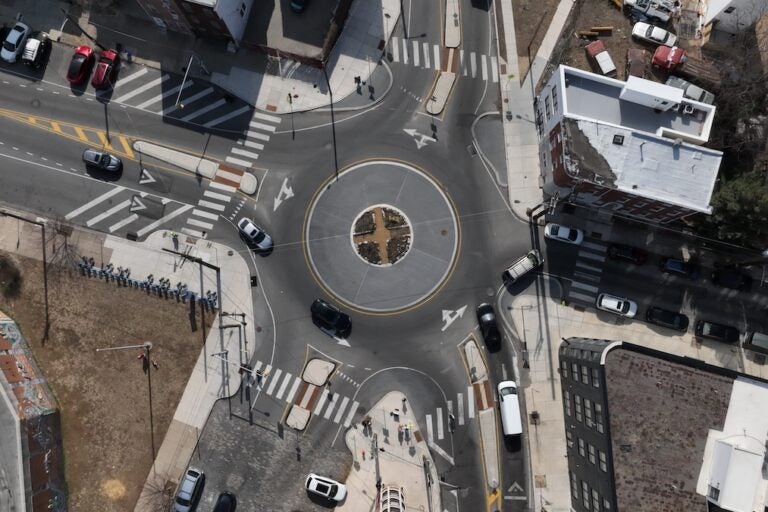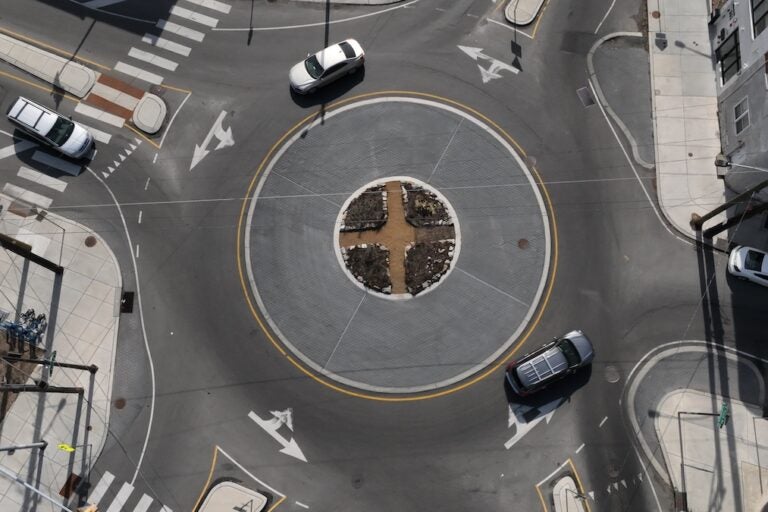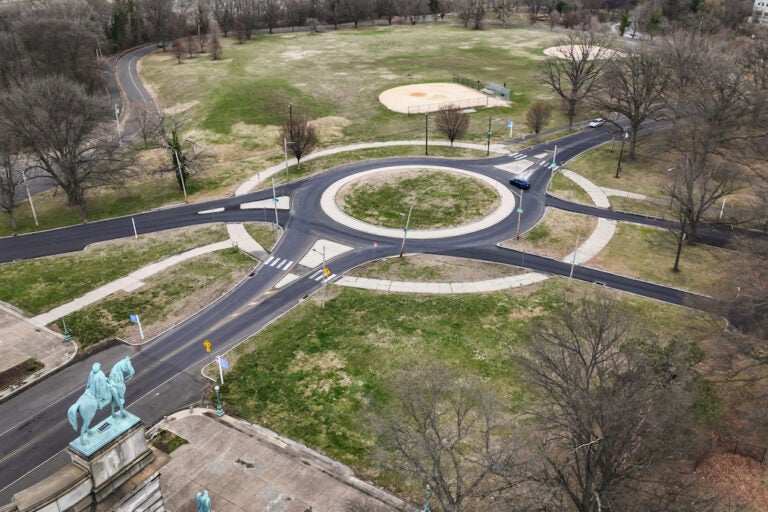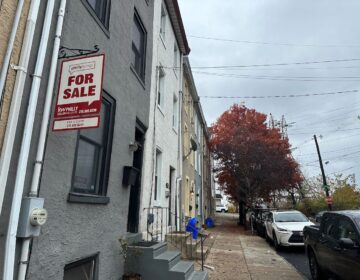How to drive Philly’s newest roundabout
Don't worry, it’s not a Jersey traffic circle!
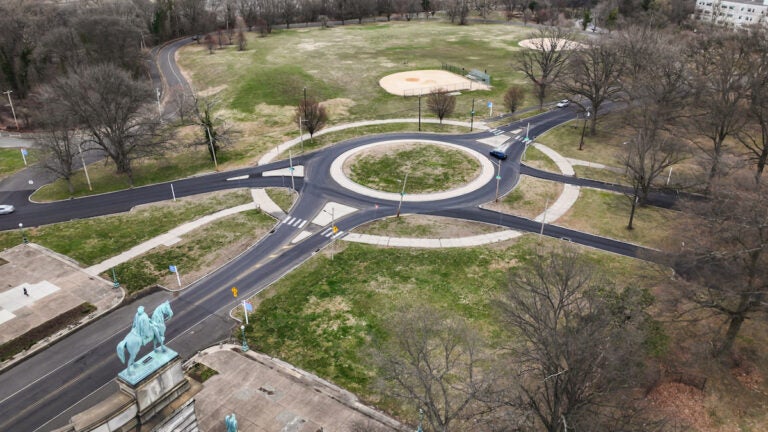
Traffic circle at Lansdowne Drive and Avenue of the Republic in Philadelphia. (Kimberly Paynter/WHYY)
Have a question about Philly’s neighborhoods or the systems that shape them? PlanPhilly reporters want to hear from you! Ask us a question or send us a story idea you think we should cover.
The city of Philadelphia is nearing completion of its latest traffic calming effort — a new roundabout.
The Penrose Roundabout in South Philly is set to finish on budget and six months ahead of schedule, said Christopher Young, communications manager of the Philadelphia Department of Streets. It replaces a large and complex intersection at Moyamensing, Penrose and Packer avenues.
“The intersection was basically the size of Citizens Bank Park,” said John Boyle, research director for Bicycle Coalition of Greater Philadelphia.
Boyle said he was impressed by how quickly the temporary roundabout design at the outset of construction changed the traffic pattern.
“The reaction was immediate because people found that this crazy intersection [had] suddenly been tamed,” Boyle said.
The intersection was along the city’s “High Injury Network” of dangerous roads, according to Young, part of Vision Zero Philadelphia’s effort to target streets where a majority of traffic crashes occur in the city.
Traffic safety data and experts widely agree that roundabouts are more efficient and far safer than traditional intersections because they reduce speeds, but allow for continuous movement.
Many people have yet to drive through a roundabout. So here’s what to do if you come to one.
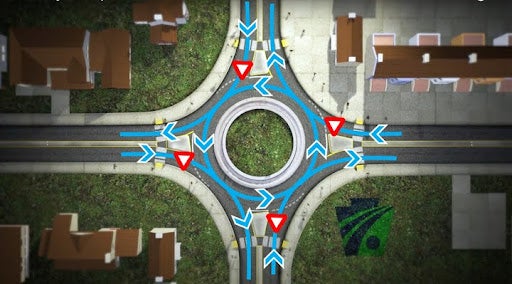
- Traffic within the circle has the right of way.
- It’s similar to turning right onto a one-way street. In a car, check for pedestrians and cyclists in the crosswalk, and yield to oncoming vehicles.
- Don’t be too “nice,” or the people behind you will certainly honk. So, when you see a gap in traffic, roll right on.
- Continue through the roundabout until your desired exit, and signal your right-hand turn as you do so.
- Don’t stop or change lanes within the roundabout. If there’s an emergency vehicle, continue through the roundabout and pull over after you’ve exited.
- Pedestrians should use designated crosswalks. Take advantage of the safety “islands” between lanes to cross one lane at a time. Do not stop or wait on the center island.
- Cyclists should either walk the crosswalks as a pedestrian, or act like a car, riding in the middle of the lane. Don’t hug the edge. For Penrose, cyclists may want to use Penrose’s dedicated, off-street “bikeway,” which is the “best option for roundabouts,” Boyle said.
- The Pennsylvania Department of Transportation created a handy video to explain in detail.
Okay, so we have an idea of roundabouts. But aren’t they just traffic circles in disguise? You know, the big and confusing ones in New Jersey that few remember fondly?
In short, roundabouts and traffic circles are NOT the same. Let’s go over the differences.
Roundabouts
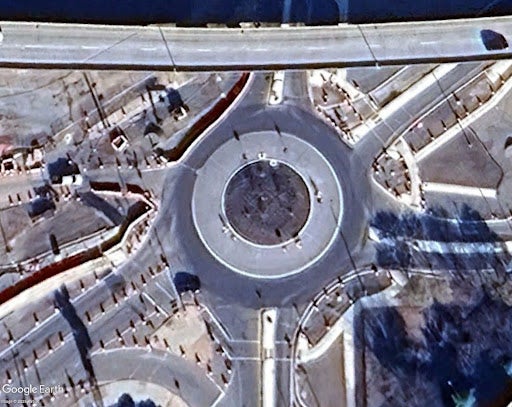
- Smaller – 45 feet to 200 feet in diameter. Penrose is around 200 feet, according to Google Maps.
- Usually a single lane, sometimes two. No lane changing.
- Incoming drivers yield to traffic within the circle. No stopping within.
- Medians or islands that split traffic entering and exiting the roundabout and provide safety for pedestrians.
- No pedestrian access at raised central island.
Traffic Circles/Rotaries
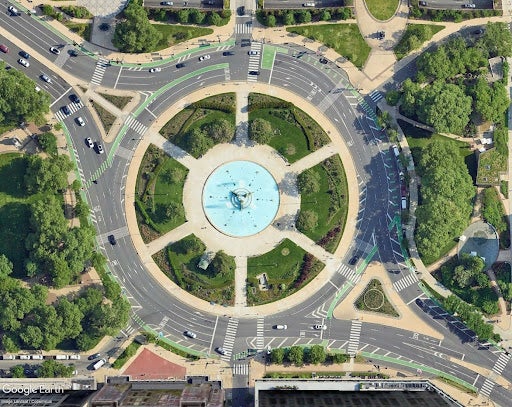
- Larger. According to Google Maps, Logan Square and its roadway are around 500 feet long.
- Typically older.
- Vehicles can change lanes.
- Often must yield or stop for traffic entering the circle.
- Often has traffic lights or stop signs.
- The center island is usually accessible to pedestrians.
After becoming popularized in the early 20th century, traffic circles, or rotaries, became congested and dangerous as traffic volumes and vehicle speeds increased, eventually growing out of favor.
Meanwhile, in the 1960s, the United Kingdom came up with a simple fix to their own traffic circles, ushering in the age of the modern roundabout — give the right of way to the traffic within the circle.
In the Northeast, the common misconception between rotary and roundabout still persists, bringing anguish to drivers and affecting perceptions of modern roundabouts, said Rock Hoffman, the Total Traffic & Weather Network news producer.
“I think there’s a certain level of intimidation for drivers my age who remember those days of the circles through Cherry Hill, [New Jersey],” he said.
Finally, here’s a fun picture of Logan Circle from 2002 as a reward for getting through the article. It’s rare to get clear satellite imagery from 20 years ago.


Get daily updates from WHYY News!
WHYY is your source for fact-based, in-depth journalism and information. As a nonprofit organization, we rely on financial support from readers like you. Please give today.



